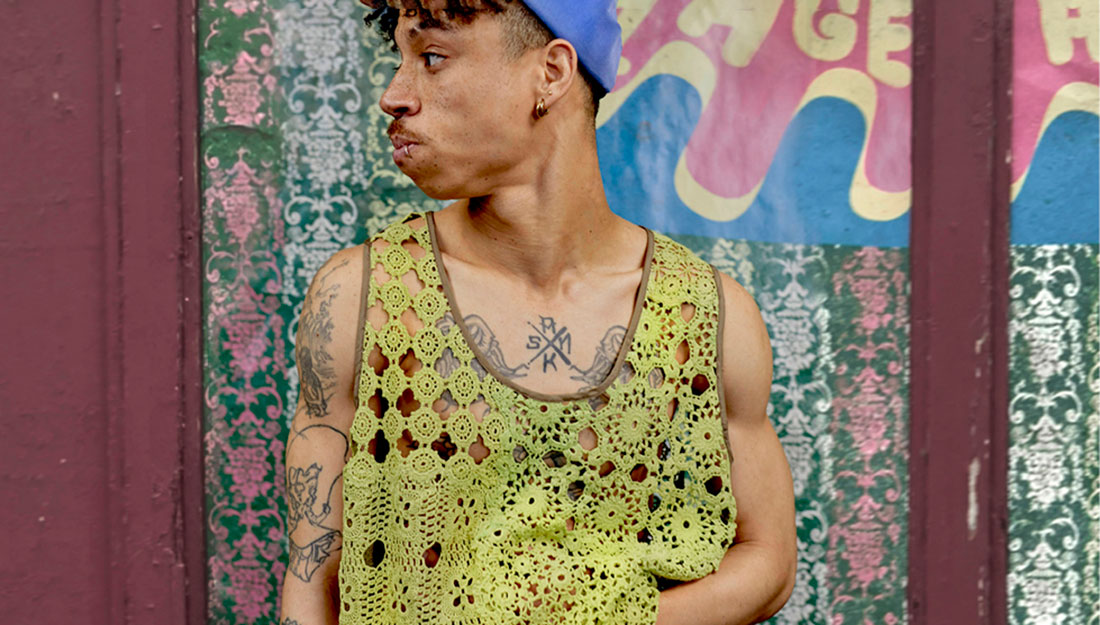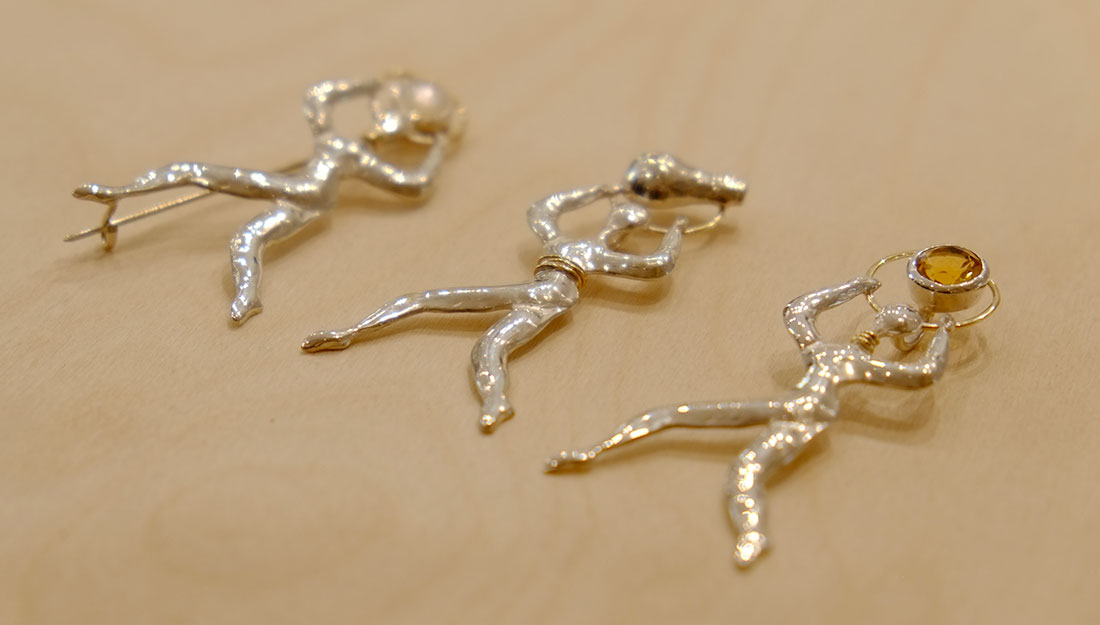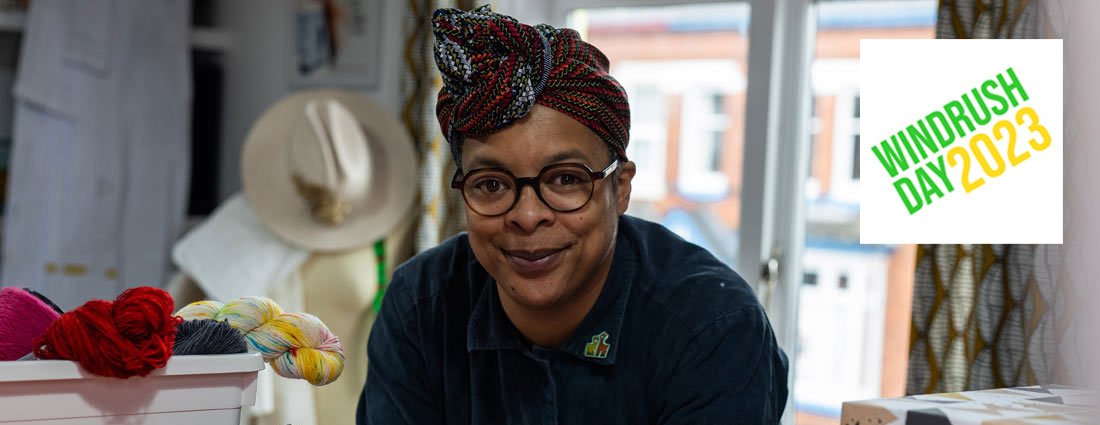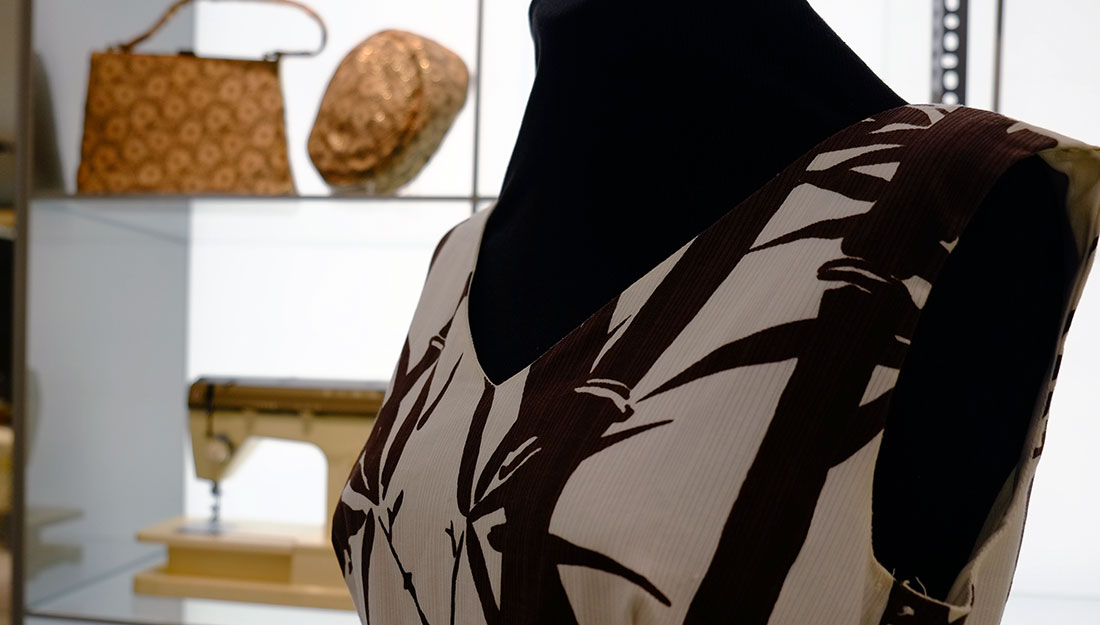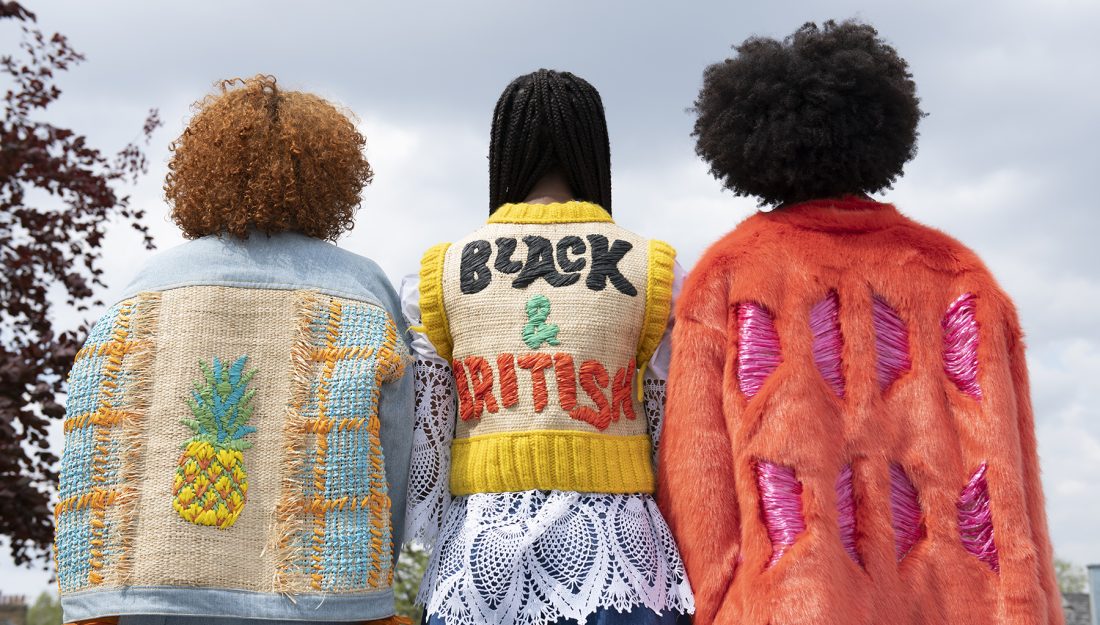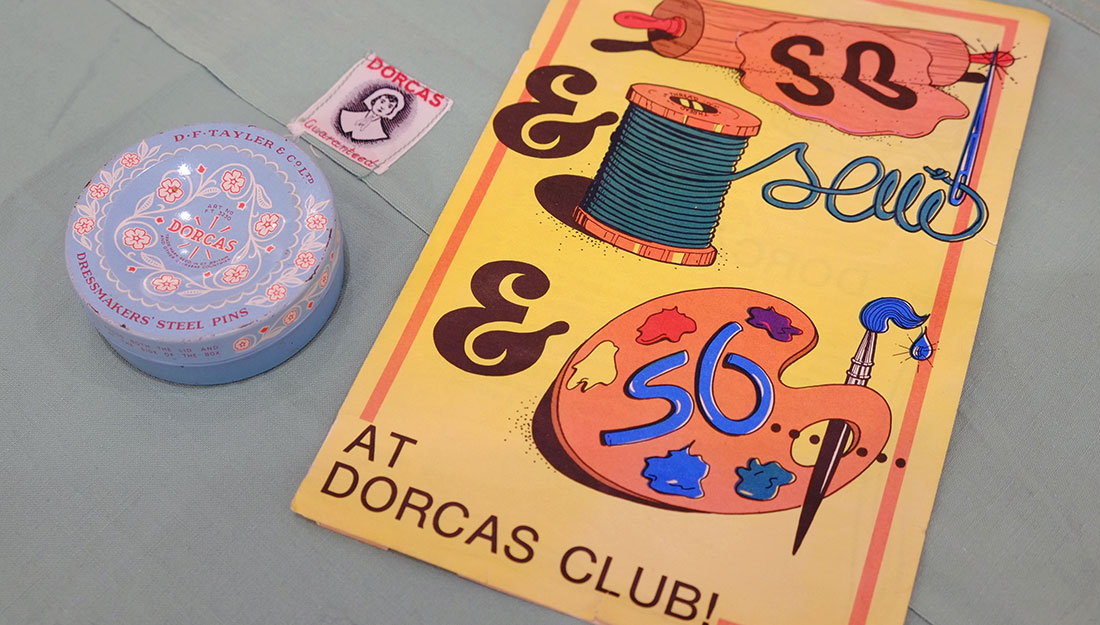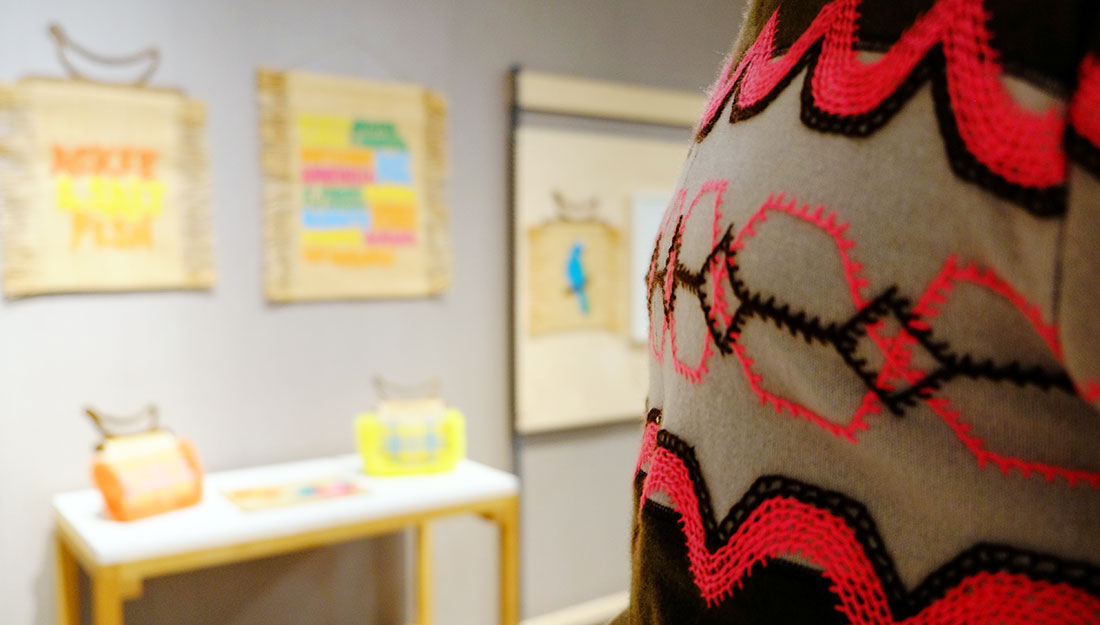
Dorcas Stories from the Front Room exhibition.
The Windrush legacy is continuously evolving in the hands of the next generation through intersectional identities. They create conversations that express their Caribbean identity and heritage using a range of visual interconnections between past and present, referencing craft skills, design process and practice and materials, language and music.
Daniel Gayle of denzilpatrick expresses his Jamaican/Irish heritage, through a sustainable fashion brand. He combines this with claiming space for self-expression of queer identity and gender. His Windrush inspired garments are based on stories of his grandmother and how she dressed up. He re-imagines her arrival in London and remodels the clothes she may have worn stating, “from epic migrations over land and sea to the small passages we take in our city, and the places we visit in our hopes and dreams”.
Tihara Smith’s designs express her Caribbean identity and are informed by oral testimony from her grandfather, inspired by his Windrush experience. From her research visits to the Caribbean, she particularly draws on straw crafts. Her contemporary typography using phrases in Jamaica patois, like “Wi Run Tings, Tings Nuh Run Wi”, (meaning we control things, things do not control us; we are in control of our destiny), she says is, “for British Caribbean people to enjoy and relate to”.
Norma Banton, is of Caribbean heritage and a master jeweller. Through her MasterPeace Academy and faith-based approach to developing her craft jewellery, the message of her work and actions, embodies the Dorcas ethos of sharing the gift of your skills with others in the community and beyond.
Sara Fowles’ podcasts, ‘Yarning: Tales from Birmingham’, about Black women knitters counteracts a wrongly perceived view by those who dominate textile narratives, and canon, that ‘Black women don’t knit’. In these interviews the stories of knitting and making are from the diaspora as well as Black British. We hear about how they learned to knit and the part it plays in their health and social connectivity. Find out more and listen to the podcasts here.
Sara Fowles in her studio (Photo: Hayley Salter)
Find out more about the Windrush generation.
